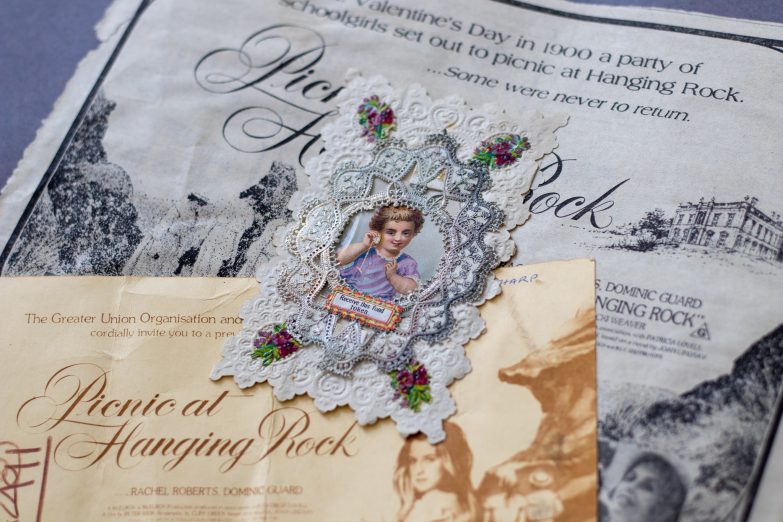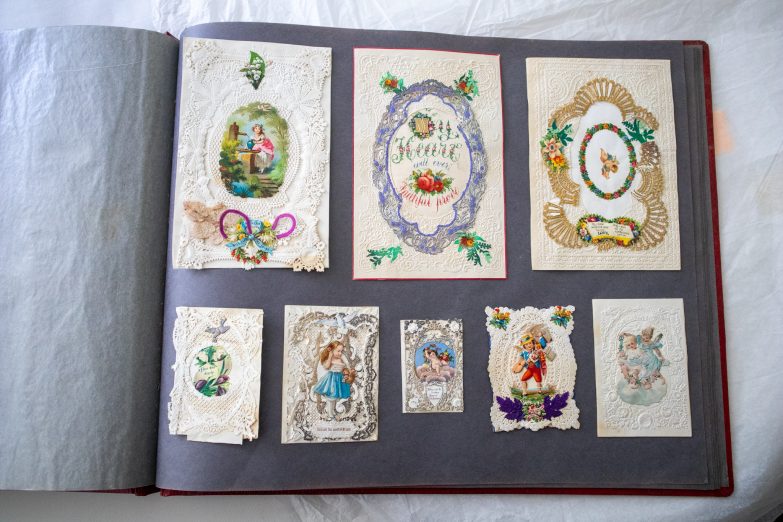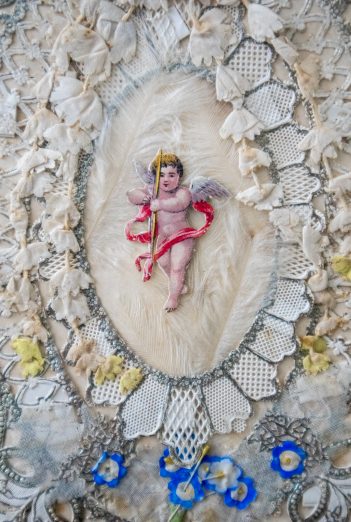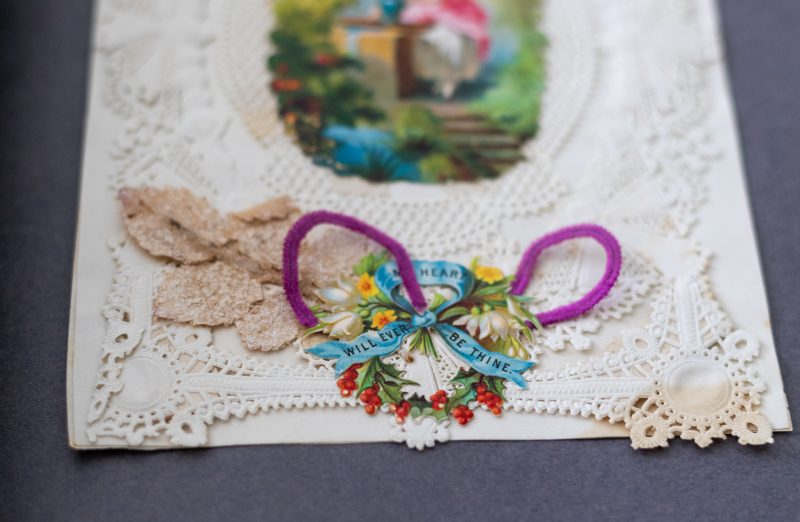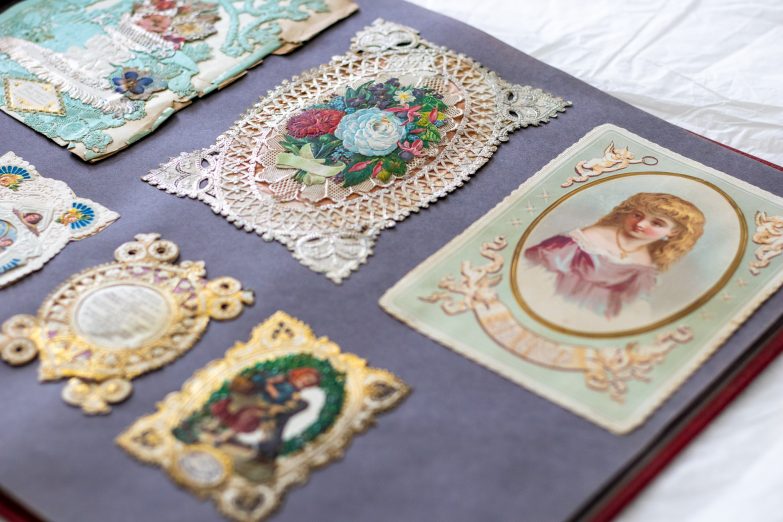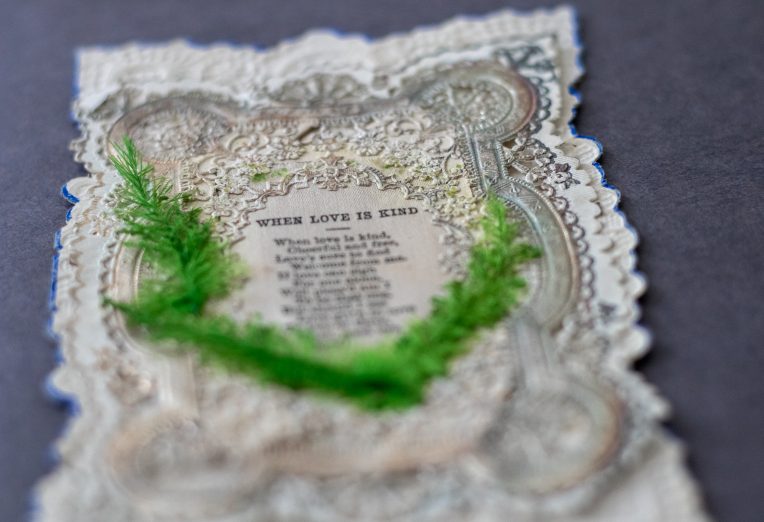A glimpse into Joan Lindsay's timeless Valentine's Day card collection
St Valentine’s Day this year marked the 100th wedding anniversary of Daryl and Joan Lindsay, who eloped at the Marylebone Registry Office in London on February 14, 1922. Both Daryl and Joan were born into influential creative families. Daryl was a member of the famous Lindsay family of artists and was the director of the National Gallery of Victoria between 1941 to 1956. In 1957 he was awarded a knighthood for his services to Australian Art. The Lock and Co hat, pinstripe pants and tailored jacket that Daryl wore to receive the award are still hanging in the wardrobe of the master bedroom at Mulberry Hill, the Lindsay’s much-loved home in Langwarrin South that endures as a time capsule of the couple.
Joan, also known as Lady Lindsay (née à Beckett Weigall) came from a family with judiciary, literary and artistic connections – her cousins were the prolific Boyd family. Although Joan was a promising artist herself, she focused more on her writing after marriage, and is best known for her memoir, Time Without Clocks (1962), and most famously for the iconic novel, Picnic at Hanging Rock (1967).
The marriage of Daryl and Joan Lindsay was the merging of two creative people. They first met at the National Gallery of Victoria, where Joan was an art student between 1916-1920.
Daryl travelled to London in 1921 to promote his work and meet with art dealers, and Joan travelled to London separately, but their paths quickly and conveniently crossed.
In Daryl’s memoir The Leafy Tree, he wrote; “Joan was in London in 1921, and a few days after her arrival I was on the doorstep of her hotel! A month or two later, we became engaged”. Their wedding was a small affair, far from home, but it was a joyous celebration followed by a grand European tour, which Daryl defined as a cheerful honeymoon in his autobiography.
“Ten days in Paris, a week on the Riviera, and ten wonderful days in Rome with a wild scramble to catch an Orient ship at Naples!”
The young couple briefly returned to London after their travels, then journeyed home to Melbourne to begin their lives together as a married couple.
Joan gave little attention to dates, even her own birthday, and although she trivialised the notion of people and events being ‘pigeon-holed in time’, February 14 was a special and significant day for Joan, who referred to it as her ‘day of days’.
“Daryl and I were married in London on St Valentine’s Day nineteen hundred and twenty-two – the only date I have ever remembered, except 1066 and Waterloo.”
Joan Lindsay’s unusual conception of time is infused in her writing. Joan often said that clocks and watches stopped around her, and ideas of parallel time and other dimensions interested her. The title of her nostalgic memoir, Time Without Clocks, is a reference to the absence of clocks in her home at Mulberry Hill.
Aside from being her wedding anniversary, Joan Lindsay immortalised the date in her novel, Picnic at Hanging Rock. On February 14, 1900, after a morning of passing around Valentine’s Day cards, the young ladies of Appleyard College set off for their fateful picnic.
Upon Joan’s death in 1984, Mulberry Hill and the Lindsay’s possessions, including many objects relating to the writing and publishing of Picnic at Hanging Rock, were left to the care of the National Trust of Australia (Victoria).
Joan Lindsay was a collector of many timeless trinkets – books, photographs, shells, rocks, and a scrapbook filled with vintage Valentine’s Day cards. Joan’s interest in antique cards began after she inherited an album from her parents, with cards and handwritten notes dating back to the 1860s.
The cards are delicate, intricate and handmade. Some are embellished with real feathers, dried flowers, lacework, fabric and embroidery. The senders of these cards don’t appear to be related to Joan, simply unknown love letters from the past.
Some of the pages of the scrapbook have notes written on them with cards assigned to particular characters in Picnic at Hanging Rock, such as Marion Quade, Edith Horton and Mademoiselle Dianne de Poitiers. Joan’s own original cards from her scrapbook were used as props by actors in the film adaptation of the novel, directed by Peter Weir in 1975.
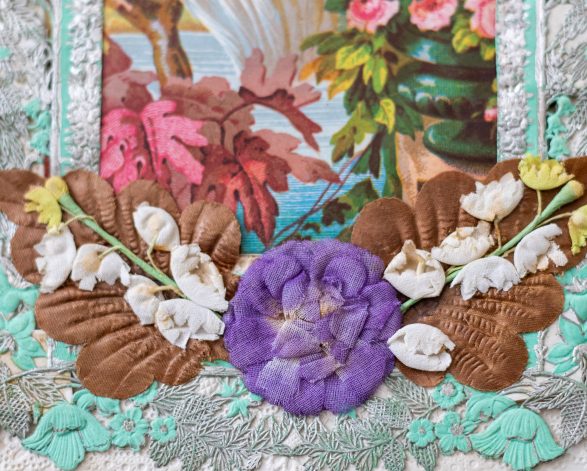
 Twitter
Twitter Facebook
Facebook Linkedin
Linkedin Email
Email